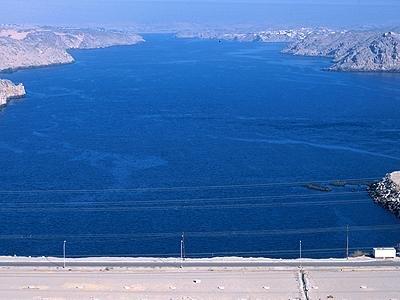The opening of General Abdel-Fattah al-Sisi, the textile industry complex of the Armed Forces in the city of El-Rubiky, has surprised many people about the feasibility of establishing new factories in this field. Al-Sisi’s decision came at a time when the old factories in Mahalla City, Gharbia Governorate, are suffering from the absence of any development or interest. Observers considered these steps as evidence that the Egyptian army decided to take over the textile industry in the country, but that raised the question of the fate of hundreds of thousands of workers working in the old textile factories. The textile industry in Egypt has largely collapsed in the past years, and the city of Mahalla has become the castle of the national industry in a miserable and unparalleled state. Amid closed factories that need the simplest things to get them back to work, laid-off workers, and the trend of most of them to other professions, accumulated losses and debts, and continuous bleeding the Ministry of Business Sector has not moved to stop it. The amazement of the followers did not stop at the opening of a new place for the spinning and weaving industry after the deliberate destruction of the old place, but rather to change the sign in the city of Rubiky, where Sisi opened a spinning and weaving complex in a place that was allocated and equipped by the government a while ago to be a city for the leather industry after the compulsory transfer of the tanneries workshops of leather in Sour Magra El-Oyoun area.
The El-Rubiky is a region of the city of Badr, which extends from the Cairo-Ismailia Desert Road to the Cairo-Suez Desert Road, and it is after the last gatherings of New Cairo, specifically between the city of Sunrise and industrial areas in the tenth of Ramadan. In earlier periods, part of the area turned into a garbage dump, which made it a hotbed of pollution. Cairo Governorate has taken a decision to transfer the leather tanneries located in the wall of the course of El-Ayoun in Old Cairo to the specialized city of Rubiky, and to resettle it according to the latest international systems and plans, allowing for the creation of an integrated leather industry, not just tanning, and the export of a finished product, according to the Ministry of Trade and Industry.
El-Rubiky
During the past year, the government issued an ultimatum to those who had received alternative workshops and tanneries in the “city of Rubiky”, and were still operating their tanneries in the area of the “Sour Magra El-Oyoun” area, obliging them to immediately move to the new workshops, or else facilities would be cut off. So, The city of leather in El-Rubiky has been built already, the tanneries are transferred to it, but “Leather” was not mentioned during the opening of al-Sisi of another spinning and weaving complex founded and managed by the Engineering Authority of the Armed Forces, which said it was working to revive the textile industry.
The military authority added that it would undertake the follow-up of the industry from its inception, from growing Egyptian long-staple cotton through all stages of production, until its exit in the form of fabric ready for manufacture.
Textile
The new complex reveals the Egyptian army’s control of the textile industry after its control of many civil industries that have been the mainstay of the strength of the national economy for many years, such as cement, iron, sugar, and oil refining. The textile industry is one of the most important business sectors in Egypt, as it includes a huge number of workers according to various government studies and statements, which indicate that the number of workers in it is not less than one million and 200 thousand workers, equivalent to 30% of the size of the workforce in Egypt, distributors Over four thousand public and private sector factories.
The number of employees of the Holding Company for Spinning and Weaving, which is one of the largest companies in the business sector in Egypt, is about 58 thousand workers, while the total wages of employees amount to 152 million dollars, with an average annual wage of 2615 dollars per person. The company ranks among the most lost companies in the public sector companies, and they are 26 companies that achieve about 90% of the losses.
Industry debt
The debts of the Holding Company for Spinning and Weaving amounted to about $ 490 million, and the government made a pro forma settlement with the National Investment Bank, to control the debts of its companies, by increasing the bank’s share in the company’s capital, while other banks took control of a number of lands and assets of the Holding Company to solve the recurring debt crisis. Workers in spinning and weaving factories, especially Mahalla spinning workers, suffer from stagnation in the sale and export of their factories’ products, and the resultant change of activity of some factories and their transformation of the furniture industry other than layoffs, as some of them turned into work as drivers on tuk-tuk (3-wheel vehicles).
The suffering of factories and the destruction of industry in Mahalla have simple causes and can be solved. Some workers say in press statements: The textile machines that are still stopped so far, some of them are stopped due to belts with a few EGP, and some are stopped due to parts that need adhesives repaired easely.





Recent Comments